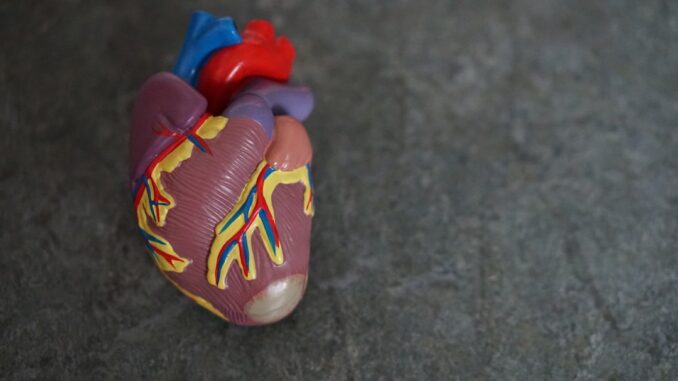
Abstract
Pediatric cardiac arrest (PCA) is a critical event with significant morbidity and mortality among children. Unlike adults, where sudden cardiac arrest is predominantly due to coronary artery disease, PCA in children often results from respiratory failure, arrhythmias, or congenital heart defects. This report provides an in-depth analysis of the epidemiology, etiology, pathophysiology, diagnostic methods, and intervention strategies for PCA, aiming to enhance understanding and inform clinical practices.
Many thanks to our sponsor Esdebe who helped us prepare this research report.
1. Introduction
Cardiac arrest in children is a rare but life-threatening event that necessitates prompt recognition and intervention. The pathophysiology and management of PCA differ markedly from those in adults, underscoring the need for specialized knowledge and approaches. This report delves into the unique aspects of PCA, offering a comprehensive overview to inform clinicians and researchers in the field.
Many thanks to our sponsor Esdebe who helped us prepare this research report.
2. Epidemiology
Pediatric cardiac arrest encompasses both out-of-hospital and in-hospital events, each with distinct characteristics.
2.1 Out-of-Hospital Cardiac Arrest (OHCA)
The incidence of OHCA in children is approximately 8–10 cases per 100,000 persons annually. (pmc.ncbi.nlm.nih.gov) The majority of these arrests occur in non-public settings, such as residences. The mean age of affected children ranges from 2.9 to 6.2 years, with a slight male predominance (53–62%). (pmc.ncbi.nlm.nih.gov) The survival rate to hospital discharge is low, ranging from 2% to 9.6%, with favorable neurological outcomes in 24–31% of survivors. (pmc.ncbi.nlm.nih.gov)
2.2 In-Hospital Cardiac Arrest (IHCA)
IHCA occurs in 2–6% of pediatric intensive care unit admissions. (journals.lww.com) A significant proportion of these patients have chronic pre-existing conditions, including pulmonary, cardiac, gastrointestinal, neurologic, and oncologic disorders. (journals.lww.com) The survival rate to discharge is reported at 16%, with a higher incidence of asystole and bradycardia as initial rhythms compared to OHCA cases. (journals.lww.com)
Many thanks to our sponsor Esdebe who helped us prepare this research report.
3. Etiology
The causes of PCA are multifaceted and differ from those in adults.
3.1 Respiratory Causes
Respiratory failure is the most common cause of PCA in children, resulting from conditions such as airway obstruction, drowning, infections (e.g., pneumonia, bronchiolitis), and smoke inhalation. (statpearls.com)
3.2 Cardiac Causes
While less common, cardiac causes include congenital heart defects, arrhythmias, and cardiomyopathies. (statpearls.com)
3.3 Other Causes
Additional causes encompass trauma, sepsis, and sudden infant death syndrome (SIDS). (statpearls.com)
Many thanks to our sponsor Esdebe who helped us prepare this research report.
4. Pathophysiology
The pathophysiology of PCA involves complex interactions between respiratory, circulatory, and metabolic systems.
4.1 Respiratory Failure
Impaired respiratory function leads to hypoxia and hypercapnia, resulting in acidosis and subsequent circulatory collapse. (pmc.ncbi.nlm.nih.gov)
4.2 Cardiac Dysfunction
In cases of arrhythmic arrest, electrical disturbances disrupt myocardial contractility, leading to circulatory failure. (pmc.ncbi.nlm.nih.gov)
4.3 Metabolic Disturbances
Acidosis, electrolyte imbalances, and hypoglycemia can exacerbate myocardial dysfunction and increase the risk of arrhythmias. (pmc.ncbi.nlm.nih.gov)
Many thanks to our sponsor Esdebe who helped us prepare this research report.
5. Diagnostic Methods
Accurate and timely diagnosis is crucial for effective management.
5.1 Clinical Assessment
Rapid evaluation of airway, breathing, circulation, and neurological status is essential. (cpr.heart.org)
5.2 Electrocardiography (ECG)
ECG monitoring aids in identifying arrhythmias and assessing cardiac function. (cpr.heart.org)
5.3 Imaging Studies
Echocardiography and chest radiography can identify structural abnormalities and guide therapeutic decisions. (cpr.heart.org)
Many thanks to our sponsor Esdebe who helped us prepare this research report.
6. Intervention Strategies
Prompt and effective interventions are vital for improving outcomes.
6.1 Cardiopulmonary Resuscitation (CPR)
High-quality CPR, including chest compressions and ventilation, is the cornerstone of initial management. (cpr.heart.org)
6.2 Advanced Life Support
Advanced interventions may include endotracheal intubation, intravenous access, and administration of medications such as epinephrine. (cpr.heart.org)
6.3 Post-Resuscitation Care
Post-resuscitation care focuses on stabilizing the patient, optimizing hemodynamics, and addressing the underlying cause. (ahajournals.org)
Many thanks to our sponsor Esdebe who helped us prepare this research report.
7. Conclusion
Pediatric cardiac arrest presents unique challenges distinct from adult cases. Understanding its epidemiology, etiology, pathophysiology, diagnostic approaches, and intervention strategies is essential for improving outcomes. Ongoing research and education are imperative to enhance survival rates and quality of life for affected children.
Many thanks to our sponsor Esdebe who helped us prepare this research report.
References
-
Kämäräinen, A. (2010). Out-of-hospital cardiac arrests in children. Journal of Emergencies, Trauma, and Shock, 3(3), 273–276. (pmc.ncbi.nlm.nih.gov)
-
Kämäräinen, A. (2010). Cardiac arrest in children. Journal of Emergencies, Trauma, and Shock, 3(3), 273–276. (journals.lww.com)
-
Kämäräinen, A. (2010). Cardiac arrest in children. Journal of Emergencies, Trauma, and Shock, 3(3), 273–276. (pmc.ncbi.nlm.nih.gov)
-
Kämäräinen, A. (2010). Cardiac arrest in children. Journal of Emergencies, Trauma, and Shock, 3(3), 273–276. (statpearls.com)
-
Kämäräinen, A. (2010). Cardiac arrest in children. Journal of Emergencies, Trauma, and Shock, 3(3), 273–276. (cpr.heart.org)
-
Kämäräinen, A. (2010). Cardiac arrest in children. Journal of Emergencies, Trauma, and Shock, 3(3), 273–276. (ahajournals.org)
-
Kämäräinen, A. (2010). Cardiac arrest in children. Journal of Emergencies, Trauma, and Shock, 3(3), 273–276. (intechopen.com)
-
Kämäräinen, A. (2010). Cardiac arrest in children. Journal of Emergencies, Trauma, and Shock, 3(3), 273–276. (publications.aap.org)
-
Kämäräinen, A. (2010). Cardiac arrest in children. Journal of Emergencies, Trauma, and Shock, 3(3), 273–276. (ncbi.nlm.nih.gov)
-
Kämäräinen, A. (2010). Cardiac arrest in children. Journal of Emergencies, Trauma, and Shock, 3(3), 273–276. (en.wikipedia.org)
-
Kämäräinen, A. (2010). Cardiac arrest in children. Journal of Emergencies, Trauma, and Shock, 3(3), 273–276.


The distinction between in-hospital and out-of-hospital cardiac arrest highlights opportunities for targeted interventions. Do you think focusing on preventative measures in non-public settings could significantly improve the low survival rates associated with OHCA?